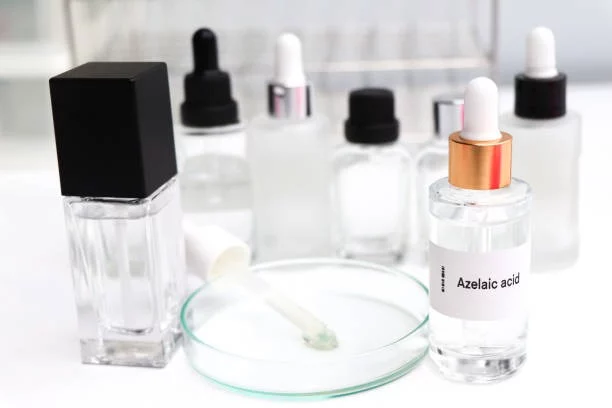Azelaic acid has earned its place as a multitasking skincare powerhouse—beloved for its ability to calm inflammation, treat acne, fade dark spots, and soothe rosacea. But like all potent ingredients, it works best when used wisely. One of the most important aspects of building an effective routine is knowing what not to pair with your azelaic acid to avoid irritation, sensitivity, or reduced effectiveness.
Ingredients That Irritate Azelaic
While azelaic acid is generally well-tolerated, combining it with certain ingredients can lead to unnecessary stress on your skin. Here are a few pairings to avoid:
1. High-Strength Acids (AHAs & BHAs)
Using glycolic acid, salicylic acid, or lactic acid in the same routine as azelaic acid can increase the risk of dryness, redness, and irritation—especially for those with sensitive or acne-prone skin. These acids all exfoliate the skin, and layering them can overstrip your moisture barrier.
2. Benzoyl Peroxide
Both benzoyl peroxide and azelaic acid are effective acne treatments, but they can be too harsh when used together. This combo may lead to dryness or flaking and compromise your skin’s protective barrier. If you want to use both, alternate days instead of layering them.
3. Retinoids
Retinoids like tretinoin or retinol can be beneficial for acne and aging, but pairing them directly with azelaic acid can lead to increased sensitivity. Consider using azelaic acid in the morning and your retinoid at night—or alternate usage based on your skin’s tolerance.
4. Vitamin C (L-Ascorbic Acid)
While some skin types can tolerate azelaic acid and vitamin C together, both ingredients can be potent. If you experience stinging or irritation, consider using vitamin C in the morning and azelaic acid at night to reduce overlap and potential reactivity.
Building Azelaic Routine
To get the most out of your azelaic acid, simplicity is key. Start by applying it once a day on clean, dry skin—preferably in the evening. Pair it with gentle, hydrating ingredients like niacinamide, hyaluronic acid, and ceramides to maintain a healthy skin barrier.
If you’re trying to manage acne, pigmentation, or redness, azelaic acid is an excellent addition to your core routine. Pairing it with antioxidant-rich supplements like moringa capsules may further support skin clarity and reduce inflammation. Just remember: consistency and moderation are more important than layering on too many actives at once.
While you’re focused on optimizing your skincare, don’t forget that your overall wellness plays a role in your skin health. Balanced nutrition and targeted hair vitamins, for example, can support both hair and skin from within. For those exploring options beyond mainstream brands, you may also find value in trying a nutrafol dupe that offers similar results with clean, high-performance ingredients.
Azelaic acid can be a game-changer in your skincare lineup—but it’s essential to know which pairings to avoid. With a balanced approach and the right supporting products, you’ll be on your way to clearer, calmer, and more radiant skin in no time.

Lexy Summer is a talented writer with a deep passion for the art of language and storytelling. With a background in editing and content creation, Lexy has honed her skills in crafting clear, engaging, and grammatically flawless writing.



